Cloud-Based Fresh Food
Logistics Solutions
Solve logistics problems
and improve the freshness of
fruit and vegetables
through
improved transportation quality
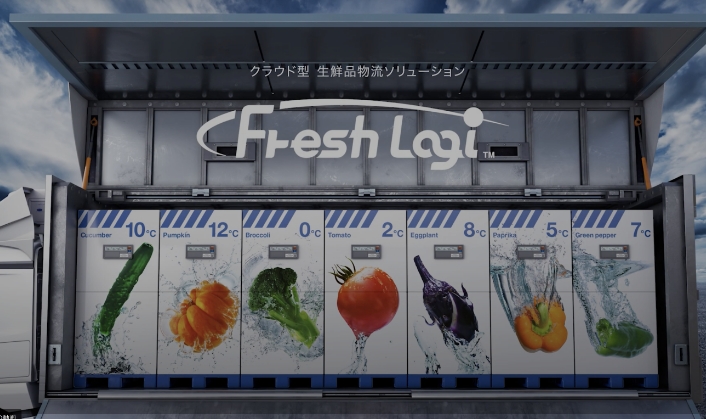
Fresh LogiTM movie
Optimize food transportation
What Asahi Kasei can do for
“food”and“agriculture”
Fresh Logi™ sealed boxes
offer solutions to these problems!
Problems related to food transportation
- Logistics surrounding
food and agriculture - Drivers working long hours
Inefficient transportation due to low
loading rates
- Deterioration of fruit and vegetables
during transportation - Higher transportation costs
and loss of
fruit and vegetables
caused by deterioration
during long-distance transportation
Asahi Kasei's Fruit and Vegetable Transportation
and Storage System
Now
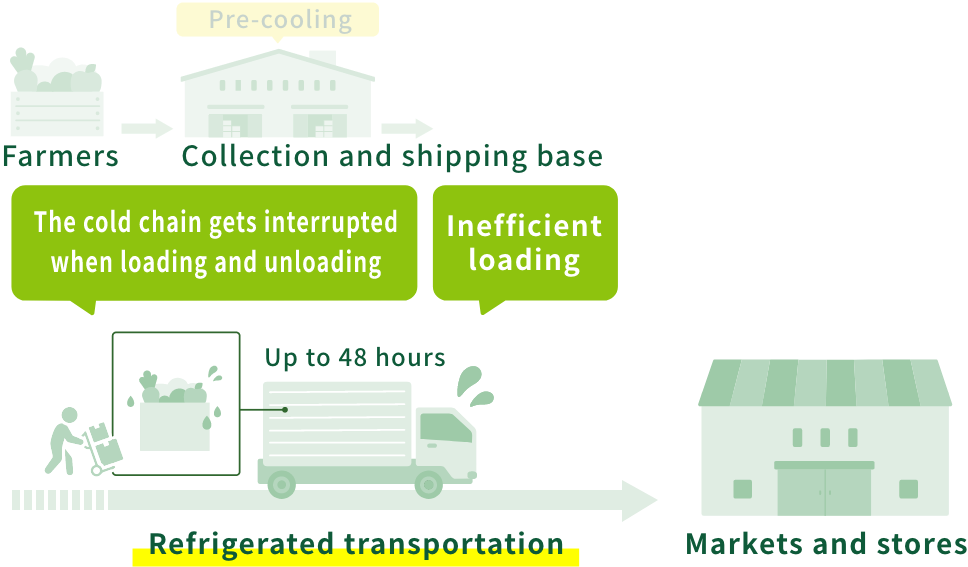
Currently, fruit and vegetables need to be transported by refrigerated trucks to maintain their freshness. This results in problems such as inefficient transportation due to low loading rates and a lack of transportation capability due to shortages of refrigerated trucks and drivers. Also, the cold chain gets interrupted when fruit and vegetables are loaded and unloaded, causing them to deteriorate.
The ideal

Highly insulated and air-tight Fresh LogiTM sealed boxes prevent the fruit and vegetables inside from being affected by the external environment (temperature, humidity, CO2, etc.), and enable them to be transported at room temperature. Furthermore, keeping the fruit and vegetables in the boxes while unloading means the cold chain is consistently maintained, improving their freshness. Fresh LogiTM sealed boxes also improve the reliability of fruit and vegetables' quality by using sensors to monitor the transportation environment, the data on which is visualized and distributed.
Three Benefits
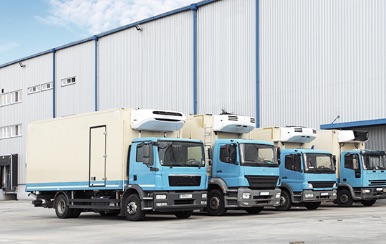
Improved transportation capability
- ・Increased transportation flexibility by using room-temperature trucks
- ・Improved loading efficiency by loading together with dry products
- ・Multiple transportation methods such as ferries, trains, etc.
- ・Reduced costs by making use of room-temperature trucks returning from their destinations.
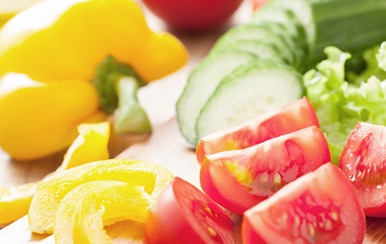
Improved freshness and quality
- ・Improved freshness by reducing lead times
- ・More stable temperature control than refrigerated trucks
- ・Improved capability to keep food fresh by controlling the transportation environment
- ・Ensured reliability by visualizing the transportation environment history

Reduced CO2 emissions
- ・For transporting from Miyazaki Prefecture to the Kanto area
Reduce emissions by up to 38%
Note: Estimate calculated by an external organization - ・Green logistics, compliance with ESG/SDGs
Box Structure and Sensor Overview
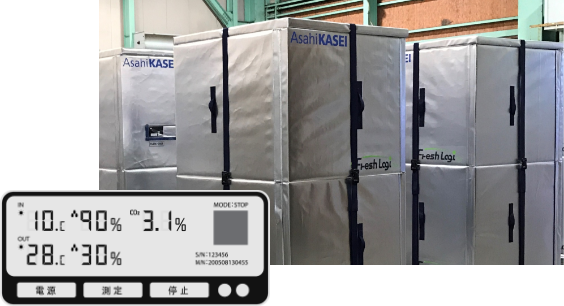
Fresh LogiTM sealed box
- ・Uses world-class insulation, Neoma FOAM.
- ・Can be made in sizes tailored to your needs.
- ・Lightweight thanks to requiring no batteries or heat storage and cooling materials.
Note: Heat storage and cooling materials can be used. - ・With a built-in sensor, data such as temperature and humidity inside and outside the box and the internal CO2 concentration can be visualized. Location information and impact detection can also be provided.
Mechanisms for Acquiring and Utilizing Data

How to Transport Using the Sealed Boxes
-

When loading the boxes
-
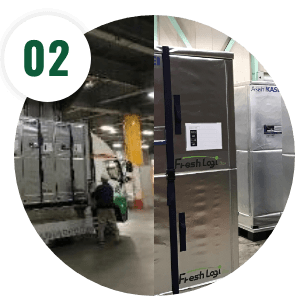
When unloading the boxes
-

Fold and store / send back after use
Test Results
Transportation using sealed boxes retains freshness for a longer period

Joint research with an external organization has confirmed the benefits of transporting in a high humidity and high CO2 environment with a maintained, moderate rise in product temperature.
Note: A high CO2 environment helps keep fruit and vegetables fresh by reducing their respiration rates.
Transportation Environment Monitoring with Sealed Box Transportation

Enables quality to be assessed on
arrival and freshness to be predicted
after arrival
an external research organization
Quality assessment on arrival, freshness prediction after arrival,
and optimal inventory control will help reduce food waste.
We will contribute to maintaining freshness, improving logistical efficiency,
and reducing environmental burdens, to reform food transportation.

